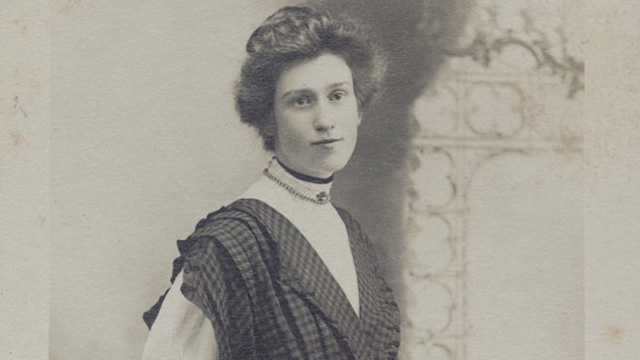

VIEW STOP 6B SCRIPT
Hello, this is Ella again. In the 19th century, young girls had to be able to sew in order to find a husband. What kind of man would marry a woman who couldn’t sew? Who would repair his clothes?
So at age 15, my mother, Emilie Wells Hallock, produced this sampler of her needlework to show that she was accomplished. Do you think it worked? Land sakes. It sure’nuf did. Hee-aa she is just after she married my father three years later!
Those sewing skills were really important. If something was ripped, we always mended it, never threw it away. Socks with holes in them were darned, not replaced.
We were frugal with everything else too. If we had an old tin can, we flattened it and used it to patch the kitchen floor. If some milk went sour, we had a recipe for sour milk cookies. Those disappeared fast around hee-aa. Leftover meat. We made hash. Left over grease from cooking. That was the basis for breakfast gravy the next morning. Left over potatoes. Well, we had endless recipes for those.
We never put old newspapers in the trash. We used them to wrap stuff up. We rolled them into spills for lighting oil lamps. (That’s probably a term you have never heard of!) We put them under our rugs to keep the drafts from blowing through the cracks between the floorboards. We used them to light the kitchen stove every morning. And if there were any old newspapers left over after all that, we put them in the outhouse for you-know-what.
Now go over to the shoemaker shop, that little building just to your left.
